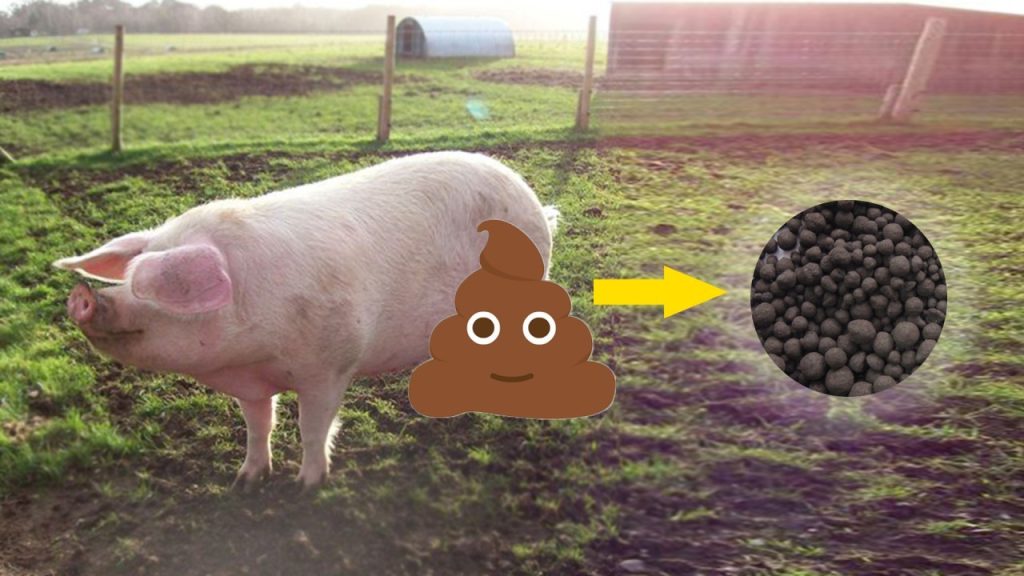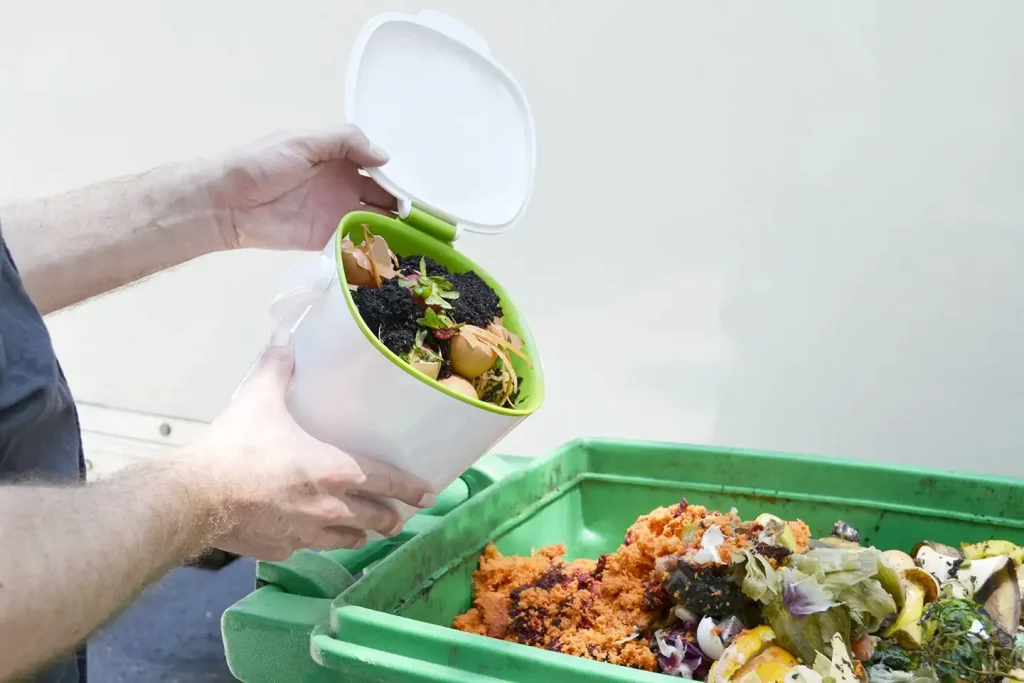With the increasing popularity of the sustainable agriculture concept worldwide,organic fertilizer production with biowaste has gradually become an important approach to address agricultural waste pollution and the decline in soil fertility. biowaste, as the core raw material for organic fertilizer production, not only has a wide range of sources but also has the advantage of resource recycling. This article will introduce the types of biowaste that can be used for organic fertilizer production, their advantages, production processes, main equipment, and production precautions.
The biowaste that can be used for organic fertilizer production mainly includes the following categories:
Agricultural waste
Agricultural waste is one of the most common raw materials for producing organic fertilizer from biowaste. Livestock manure such as cow dung, chicken manure and pig manure is rich in nitrogen, phosphorus and potassium, and can quickly enhance soil fertility. These wastes are widely available and inexpensive. After processing, they can significantly improve soil structure and increase soil water and nutrient retention capacity, making them suitable for large-scale agricultural production.

Kitchen waste
Kitchen waste is an important type of biowaste generated in urban life. For instance, banana peels, vegetable leaves and other fruit and vegetable residues are rich in organic matter and trace elements and are easy to degrade; leftovers are rich in carbohydrates and proteins, providing sufficient nutrients for microorganisms. This kind of waste ferments rapidly and can be quickly converted into humus, thus being suitable for small-scale household composting or large-scale industrial production, with a high resource utilization rate.

Industrial by-products
Waste products from industries such as distillers’ grains, soybean meal, and bagasse are also important raw materials for the production of organic fertilizers. Distillers’ grains are rich in protein and nutrients; soybean meal is rich in nitrogen and is suitable for the production of high-nitrogen fertilizers; bagasse has a high cellulose content and an appropriate carbon-to-nitrogen ratio. These raw materials are nutritionally comprehensive and suitable for large-scale production of efficient organic fertilizers.
Garden waste
Garden waste such as fallen leaves, twigs and grass clippings are also ideal raw materials for producing organic fertilizers. Fallen leaves and twigs are rich in lignin and cellulose and are suitable for long-term composting; grass clippings are rich in nitrogen and ferment quickly. After processing, these raw materials are suitable for use in landscaping and agriculture and can be made into high-quality organic fertilizers to promote ecological circulation.
Other biowaste
Other biowastes such as seaweed and mushroom residues are also widely used in the production of organic fertilizers. Seaweed is rich in minerals and trace elements, which can improve soil structure; mushroom residues are rich in organic matter and microorganisms, providing comprehensive nutrition. These raw materials can significantly enhance soil fertility and crop disease resistance.
The production of organic fertilizers from biowaste has the following significant advantages:
Rich in resources and low in cost
Biowaste comes from a wide range of sources, especially agricultural waste and kitchen waste, which can be obtained almost at no additional cost. This not only reduces the production cost of organic fertilizers but also realizes the recycling of resources.
Comprehensive nutrition, long-lasting effect
Biowaste is rich in nitrogen, phosphorus, potassium and various trace elements, providing comprehensive nutritional support for crops. Compared with traditional chemical fertilizers, organic fertilizers have a more lasting effect and can continuously improve soil fertility.
Environmentally friendly and sustainable
Producing organic fertilizer from biowaste not only reduces pollution caused by waste but also realizes the recycling of resources, which is in line with the concept of sustainable development. This not only helps solve the problem of agricultural waste disposal but also reduces the negative impact of chemical fertilizers on the environment.
Improve soil structure
The organic matter in biowaste can improve soil structure, enhance the soil’s water and nutrient retention capacity, and promote the growth of crop roots. Long-term application of organic fertilizers can significantly increase soil fertility and biological activity.
Promote microbial activity
Biowaste contains a large number of microorganisms, which can accelerate the decomposition of organic matter and enhance soil biological activity. This not only helps to improve the utilization rate of fertilizers but also strengthens the disease resistance of crops.
Hammer Crusher: This device integrates raw material crushing and impurity removal. It adopts a chain hammer structure and has a processing capacity of 8-10 tons per hour. The internal rotating drum screen can automatically separate metallic impurities. By crushing raw materials such as straw and manure into uniform particles of 3-5 centimeters, it provides a physically stable material foundation for the subsequent fermentation process, significantly increasing the fermentation efficiency by over 20%.
Vertical Fermentation tank: This is a 200-cubic-meter vertical fermentation unit, equipped with a temperature control module (45-50℃) and a variable-frequency ventilation system. Through a controllable 15-day fermentation cycle, it promotes the synthesis of humus. Compared to traditional composting, the organic matter conversion rate of this system has increased to over 85%, and the maturity of the product meets the NY 525-2021 standard.
Granulation equipment: This system consists of an 80-mesh ultrafine pulverizer and a drum granulator with a processing capacity of 3-5 tons per hour operating in series. The pulverized materials are mixed with trace elements in a twin-shaft mixer and then directly granulated. The finished granules produced by this combined equipment have an compressive strength of over 10 Newtons and a particle size qualification rate of over 95%, meeting the requirements for mechanized fertilization.

Intelligent control system: The central control platform based on the Internet of Things integrates three modules: equipment operation monitoring, process parameter optimization, and fault warning. Through 5G transmission technology, it can control 12 parameters such as fermentation temperature, humidity, and oxygen content in real time, thereby reducing overall energy consumption by 18% and increasing the overall equipment efficiency (OEE) to 92%.
Internet of Things monitoring system
Real-time monitoring of fermentation temperature, humidity and oxygen content; automatic generation of fermentation curves; remote diagnosis of equipment faults.
Energy-saving design
Recovery and utilization of waste heat from fermentation; equipment motors comply with IE4 energy efficiency standards; photovoltaic power generation provides auxiliary power.
Intelligent operation and maintenance
Predictive maintenance system; AR remote guidance maintenance; Digital production management system.
Environmental compliance measures
Waste treatment: Install biological filters and photocatalytic equipment to treat exhaust gas; build a UASB system with a daily processing capacity of 200 tons to treat wastewater; control the noise level of the entire factory at ≤ 65 dB.
Resource utilization: The reuse rate of fermentation leachate reaches 90%; collected dust is made into seedling substrate; 100% of waste packaging materials are recycled.
Environmental monitoring: Install an online monitoring system connected to the Environmental Protection Bureau, conduct environmental monitoring at the factory boundary every quarter, and establish an environmental emergency response mechanism.
Raw Materials and Fermentation Control
Raw material selection: Ensure that the raw materials are free from pollution and heavy metal contamination; avoid using harmful industrial waste or medical waste.
Pre-treatment requirements: Solid raw materials should be crushed to a size of 3-5 cm; the pH value of liquid raw materials should be adjusted to 6.5-7.5; special raw materials need to undergo sterilization treatment.
Fermentation management: The temperature should be controlled at 55-65℃ (for the initial fermentation) and 45-50℃ (for the secondary fermentation); the moisture content should be maintained at 50-60%; the pile should be turned over twice a day.
Equipment cleaning and inspection: Regularly clean equipment such as crushers and mixers; disinfect the fermentation system; establish equipment maintenance records.
Waste gas treatment: Install biological filters and photocatalytic equipment to ensure that the waste gas emissions comply with EU standards (for example, Directive 2010/75/EU).
Wastewater and noise control: Construct an UASB system to treat wastewater; keep the noise level at ≤ 65 dB; install sound insulation facilities.
Quality Control: For each batch of wastewater, the content of heavy metals, total bacterial count, and organic matter (≥ 45%) need to be tested. The moisture content should be controlled at ≤ 14%.
Operating procedures and training: Develop operating procedures and conduct regular safety training to enhance employees’ operational skills.
Emergency Plan: Develop emergency plans for equipment failures, environmental accidents, etc., and organize regular emergency drills.
Organic fertilizer production with biowaste is a sustainable approach that converts organic waste (such as livestock manure and crop residues) into nutrient-rich fertilizers. This process involves removing the waste from landfill sites, thereby reducing environmental pollution. It also improves soil quality and crop yields.
Key steps include waste collection, controlled composting/fermentation, and conversion into safe, chemical-free fertilizers. Through the formation of a nutrient cycle, it supports regenerative agriculture and provides an economically viable alternative to synthetic fertilizers, aligning with global sustainable development goals.
For more details, please feel free to contact us.
Henan Lane Heavy Industry Machinery Technology Co., Ltd.
Email: sales@lanesvc.com
Contact number: +86 13526470520
Whatsapp: +86 13526470520